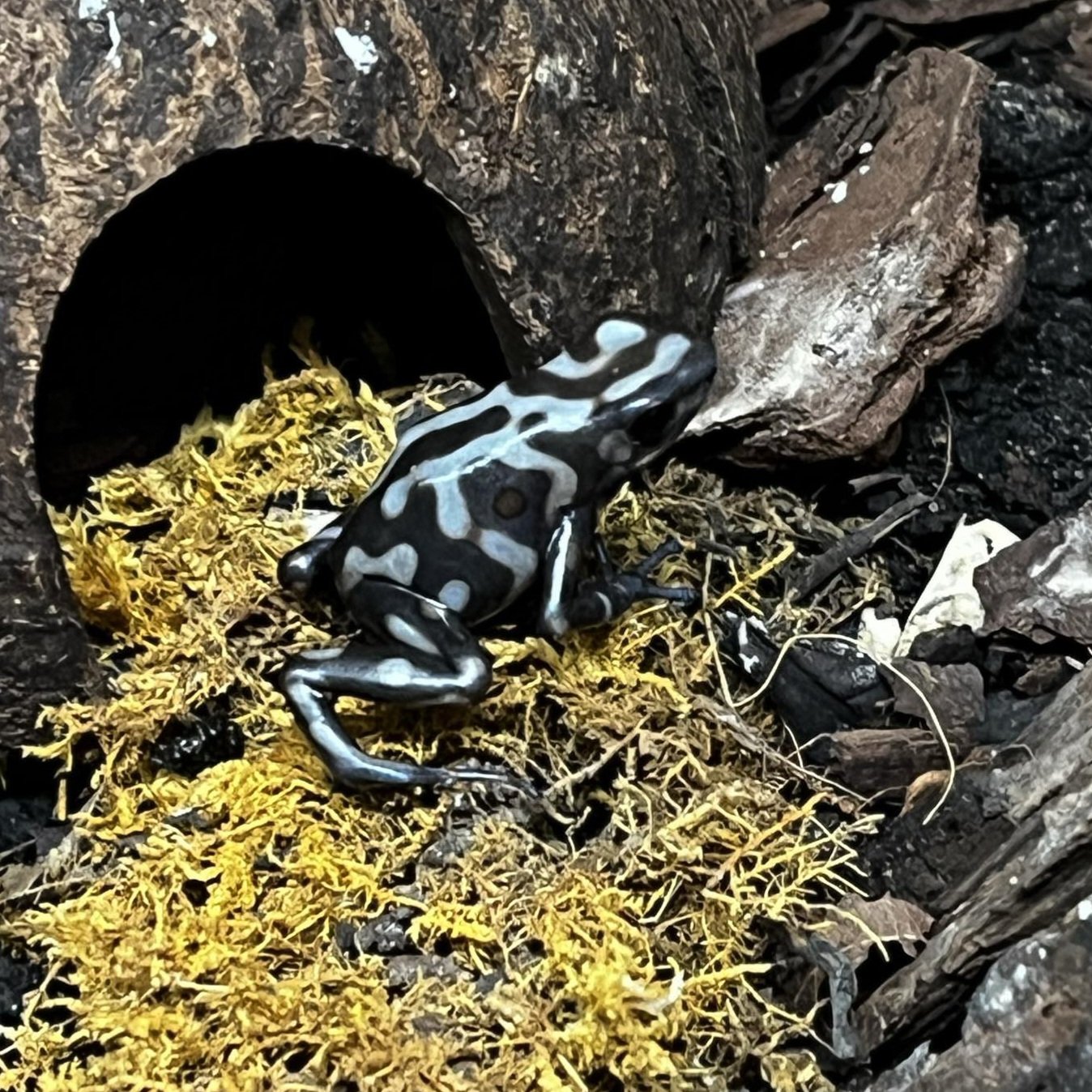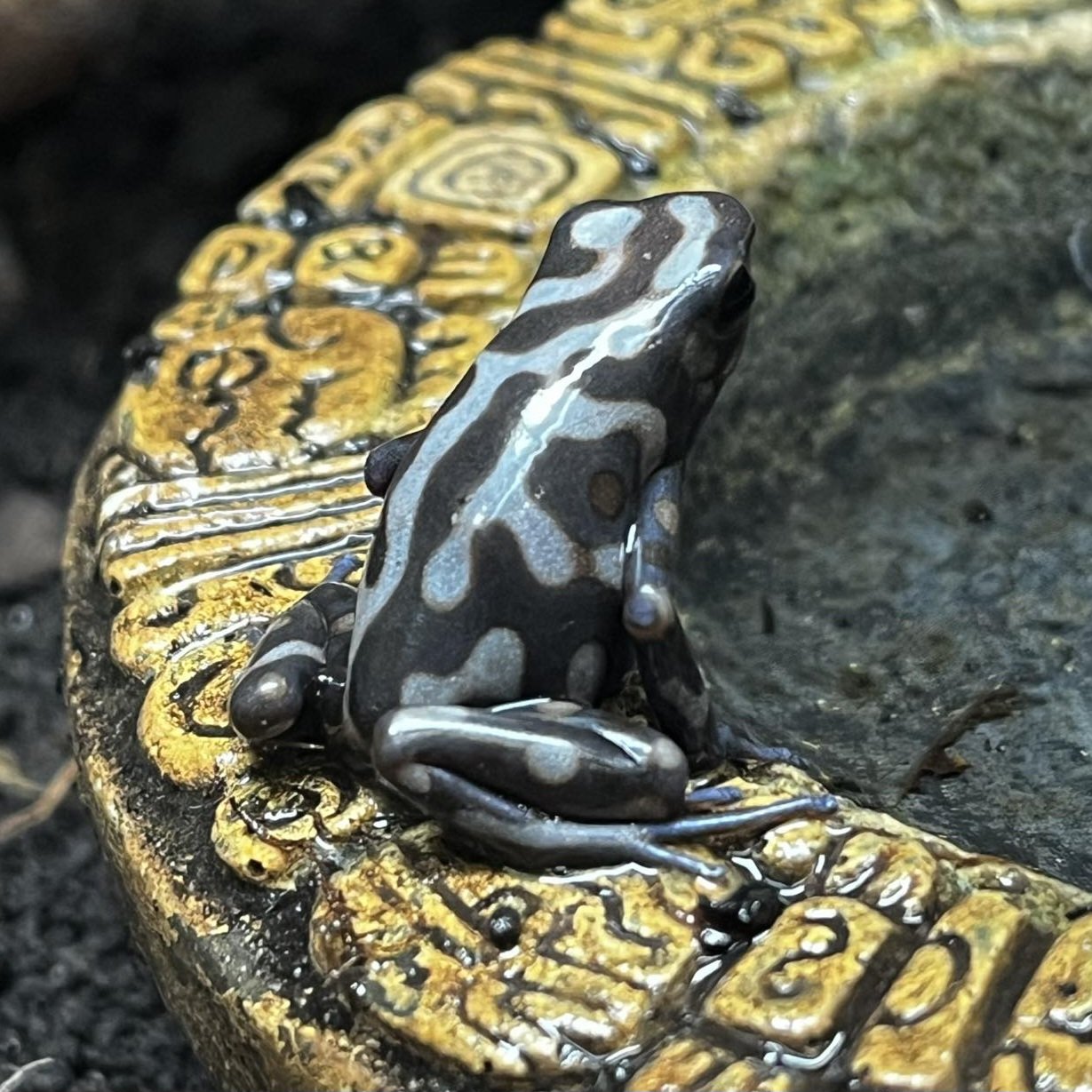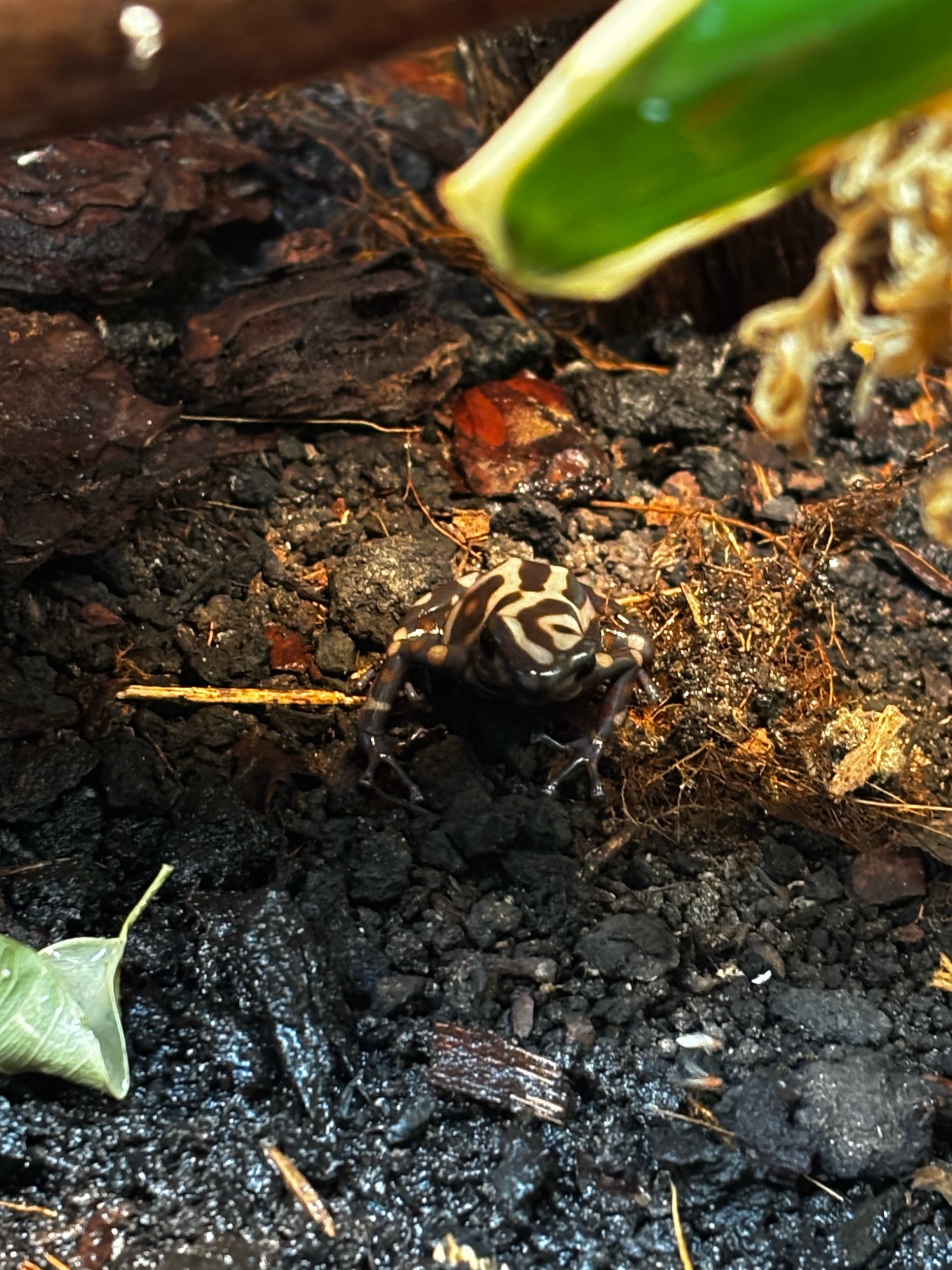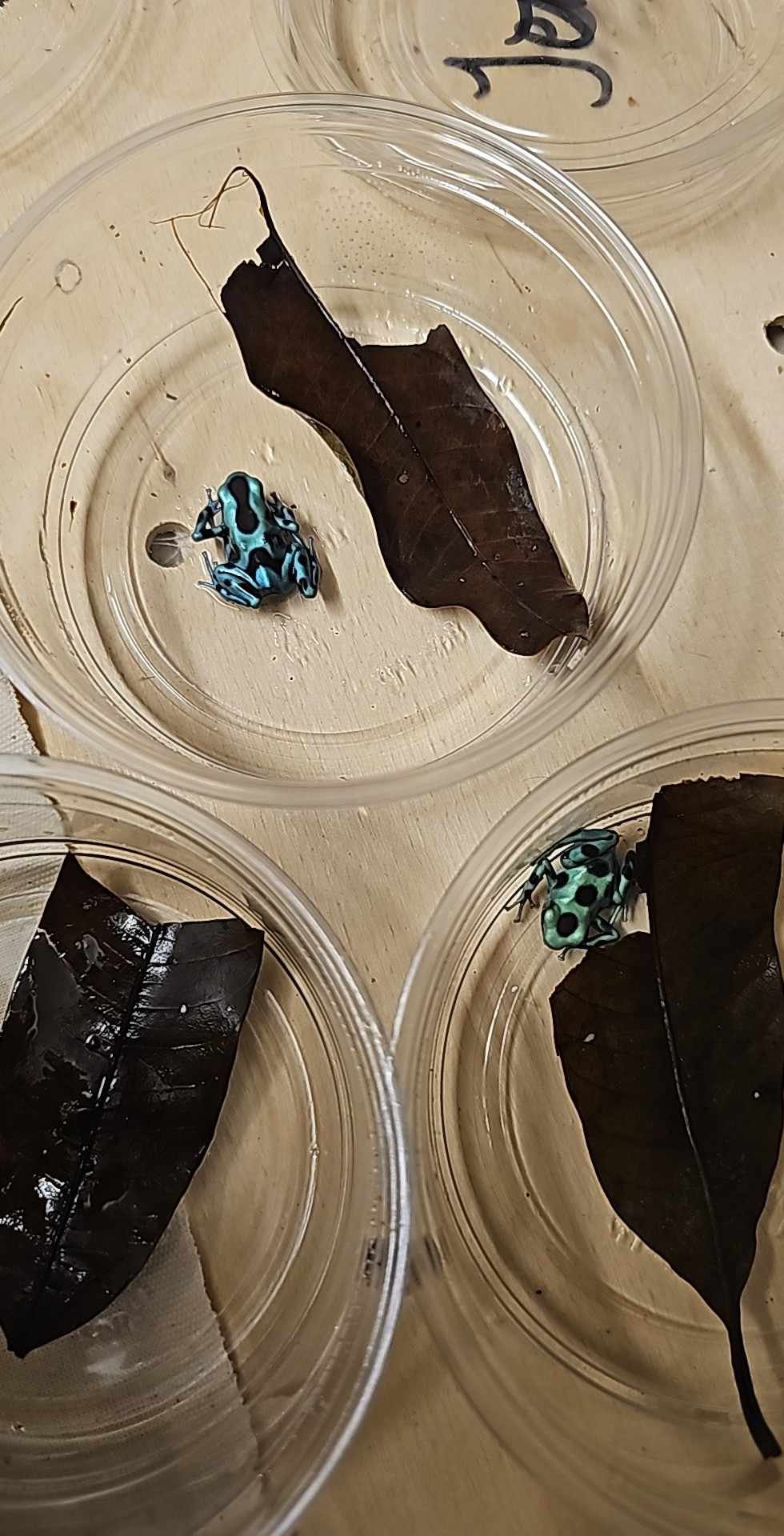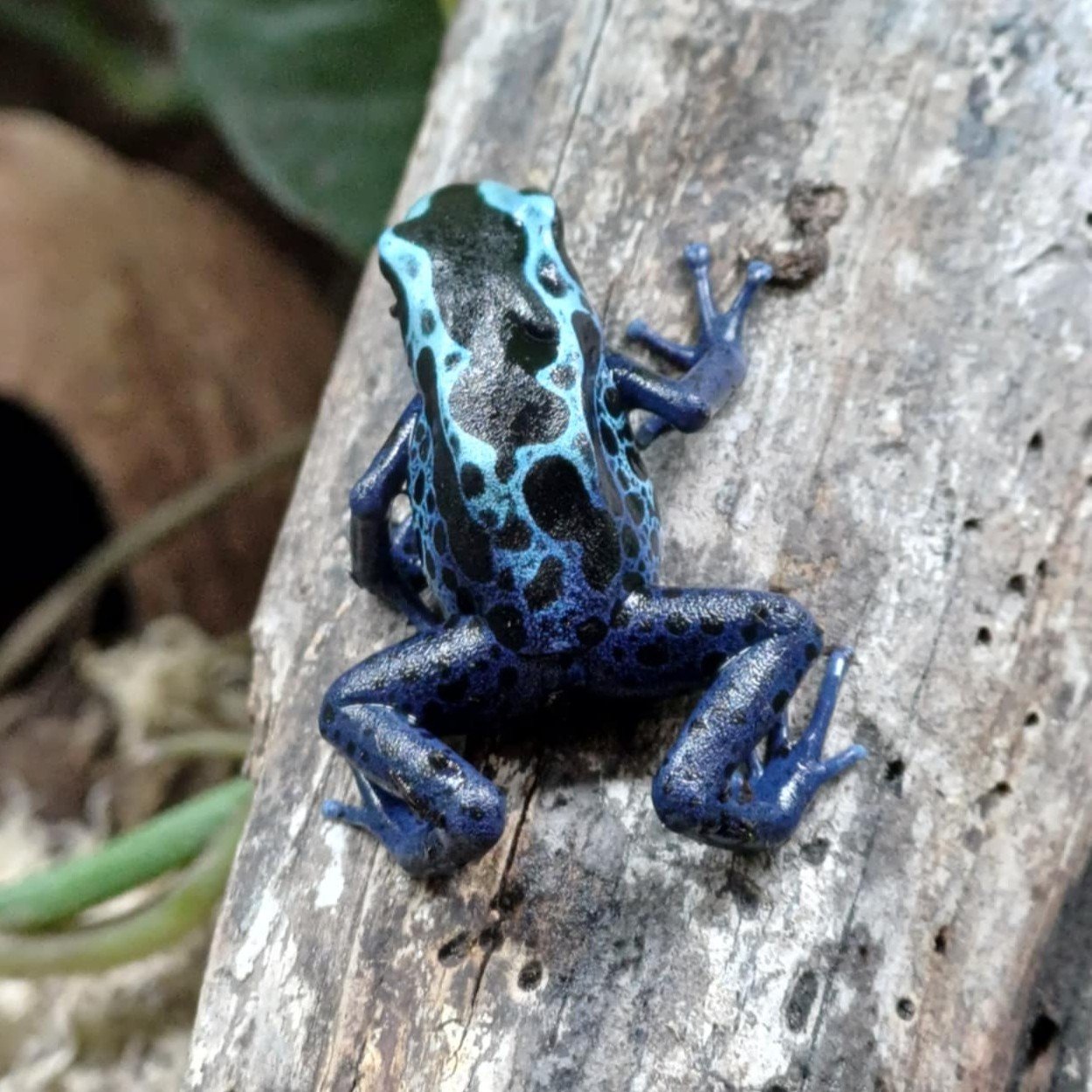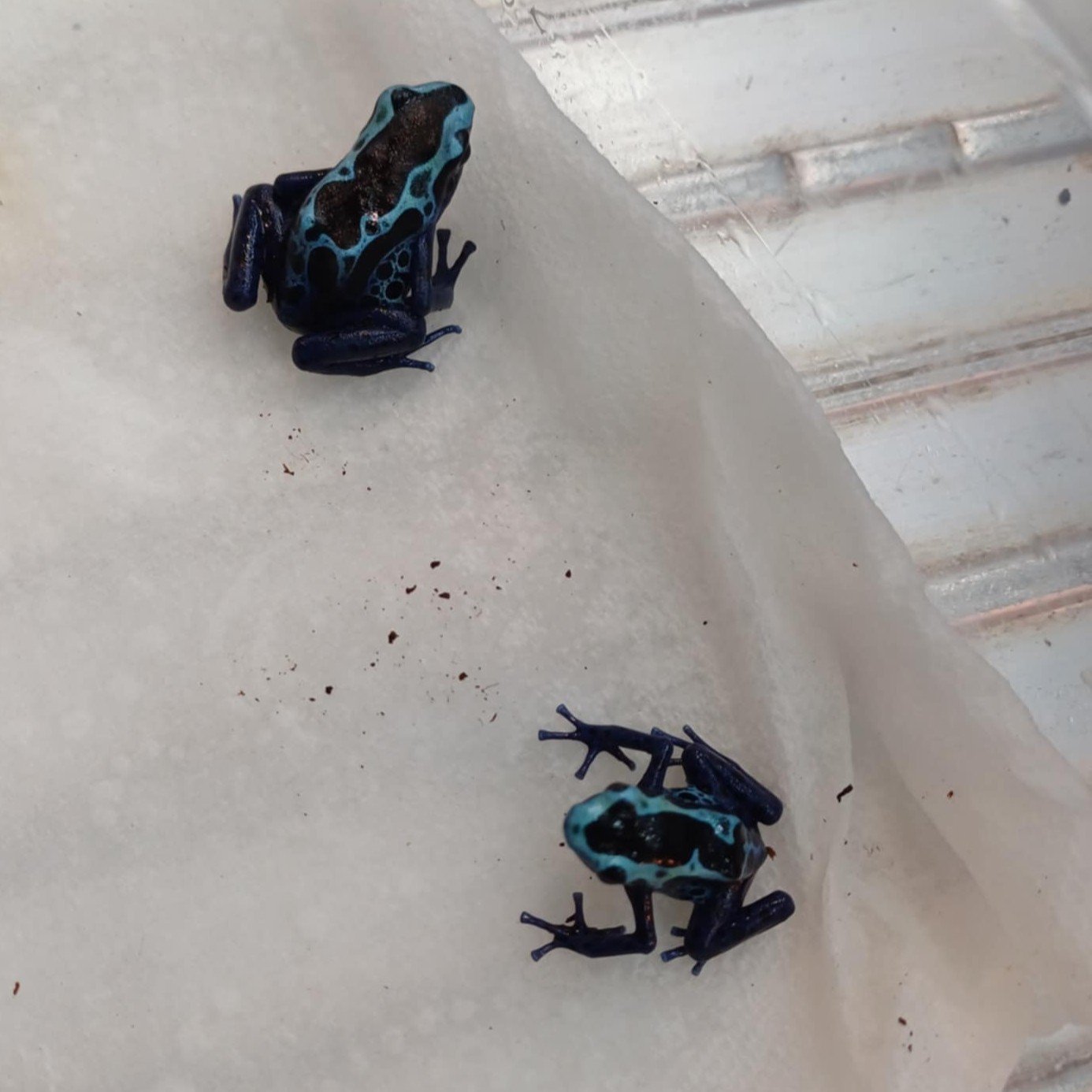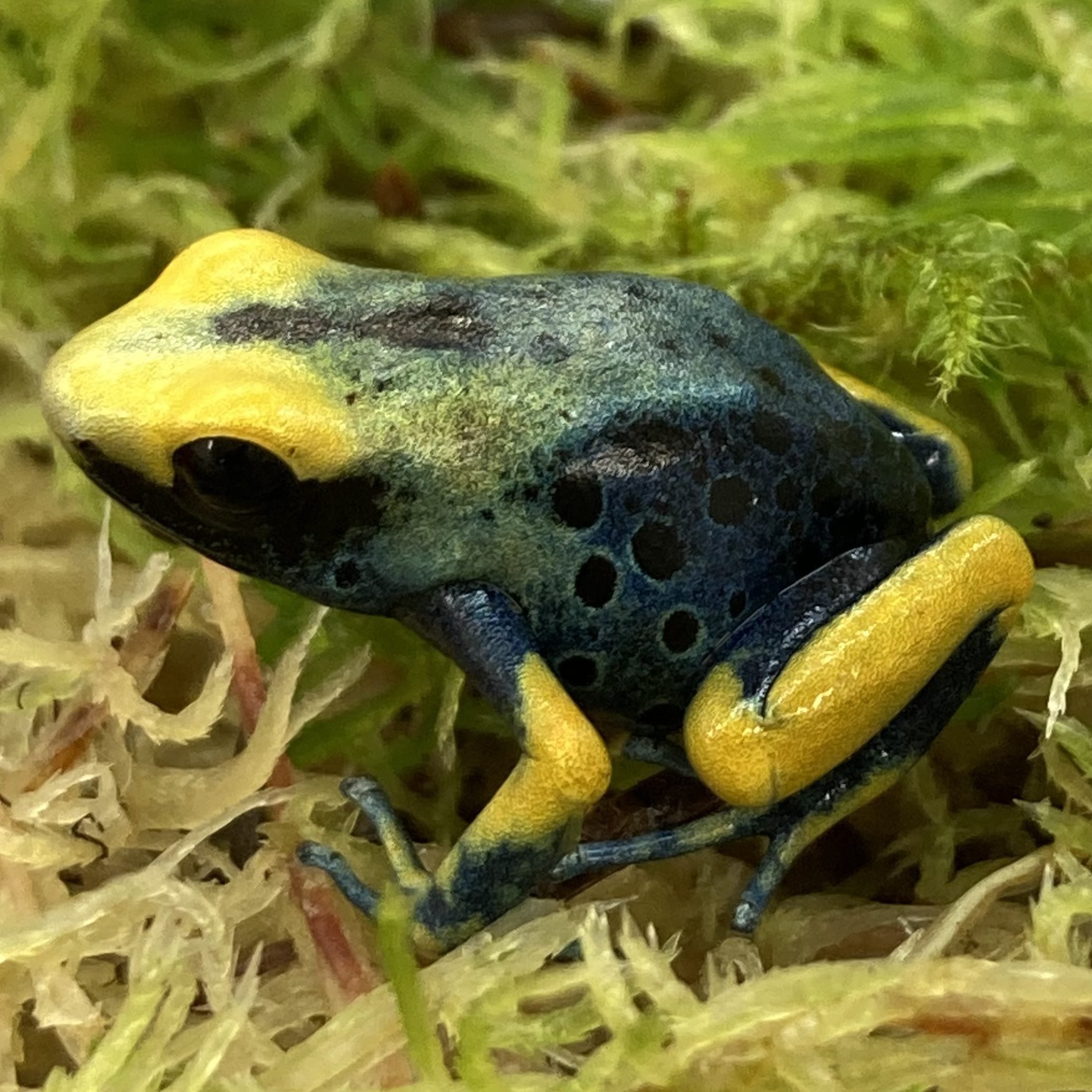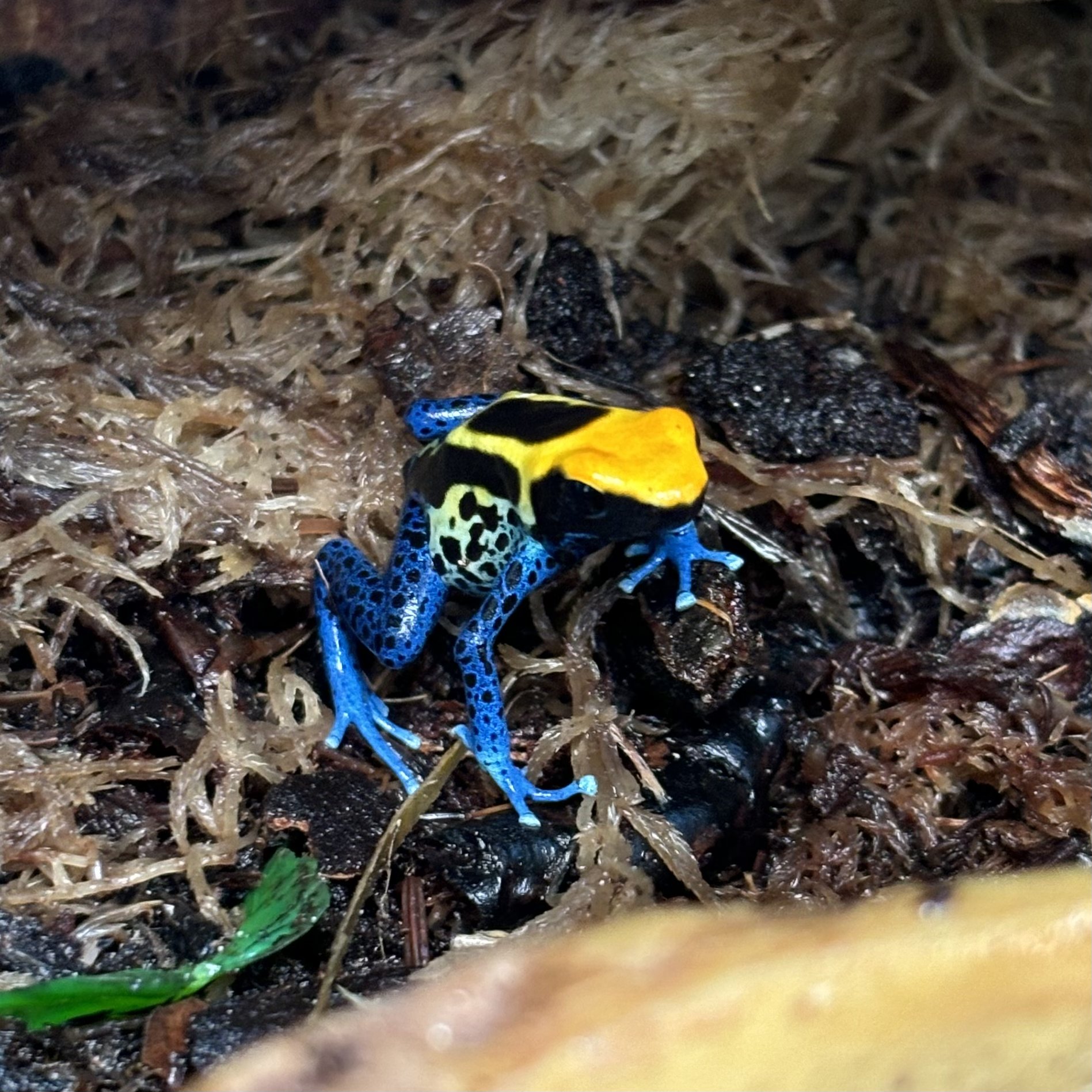Pena Blanca Dart Frog For Sale - Dendrobates auratus
Dendrobates auratus 'Pena Blanca' are a beautiful dart frog species with a striking pattern that make them amazing additions to a bioactive live-planted enclosure!
Photos taken October 2024 updated photos January 2025
For sale in our Bracknell reptile shop
Age: CB Adult
Sex: Unsexed
Suitability: Well-researched beginner
Handling
Don’t let the name scare you, poison dart frogs are only dangerous when they consume their wild diet. In the wild, this species are the most toxic amphibian on the planet!
In captivity they are safe to keep, although we avoid touching them unless essential for the frog’s well-being, as their skin is very absorbent.
Enclosure recommendations
A bioactive glass terrarium with plenty of floor space with leaf litter, branches and live plants is ideal. UV lighting is beneficial. Any heating should be thermostatically controlled.
Dendrobates auratus 'Pena Blanca' are a beautiful dart frog species with a striking pattern that make them amazing additions to a bioactive live-planted enclosure!
Photos taken October 2024 updated photos January 2025
For sale in our Bracknell reptile shop
Age: CB Adult
Sex: Unsexed
Suitability: Well-researched beginner
Handling
Don’t let the name scare you, poison dart frogs are only dangerous when they consume their wild diet. In the wild, this species are the most toxic amphibian on the planet!
In captivity they are safe to keep, although we avoid touching them unless essential for the frog’s well-being, as their skin is very absorbent.
Enclosure recommendations
A bioactive glass terrarium with plenty of floor space with leaf litter, branches and live plants is ideal. UV lighting is beneficial. Any heating should be thermostatically controlled.
Dendrobates auratus 'Pena Blanca' are a beautiful dart frog species with a striking pattern that make them amazing additions to a bioactive live-planted enclosure!
Photos taken October 2024 updated photos January 2025
For sale in our Bracknell reptile shop
Age: CB Adult
Sex: Unsexed
Suitability: Well-researched beginner
Handling
Don’t let the name scare you, poison dart frogs are only dangerous when they consume their wild diet. In the wild, this species are the most toxic amphibian on the planet!
In captivity they are safe to keep, although we avoid touching them unless essential for the frog’s well-being, as their skin is very absorbent.
Enclosure recommendations
A bioactive glass terrarium with plenty of floor space with leaf litter, branches and live plants is ideal. UV lighting is beneficial. Any heating should be thermostatically controlled.

